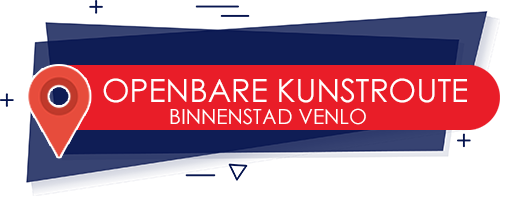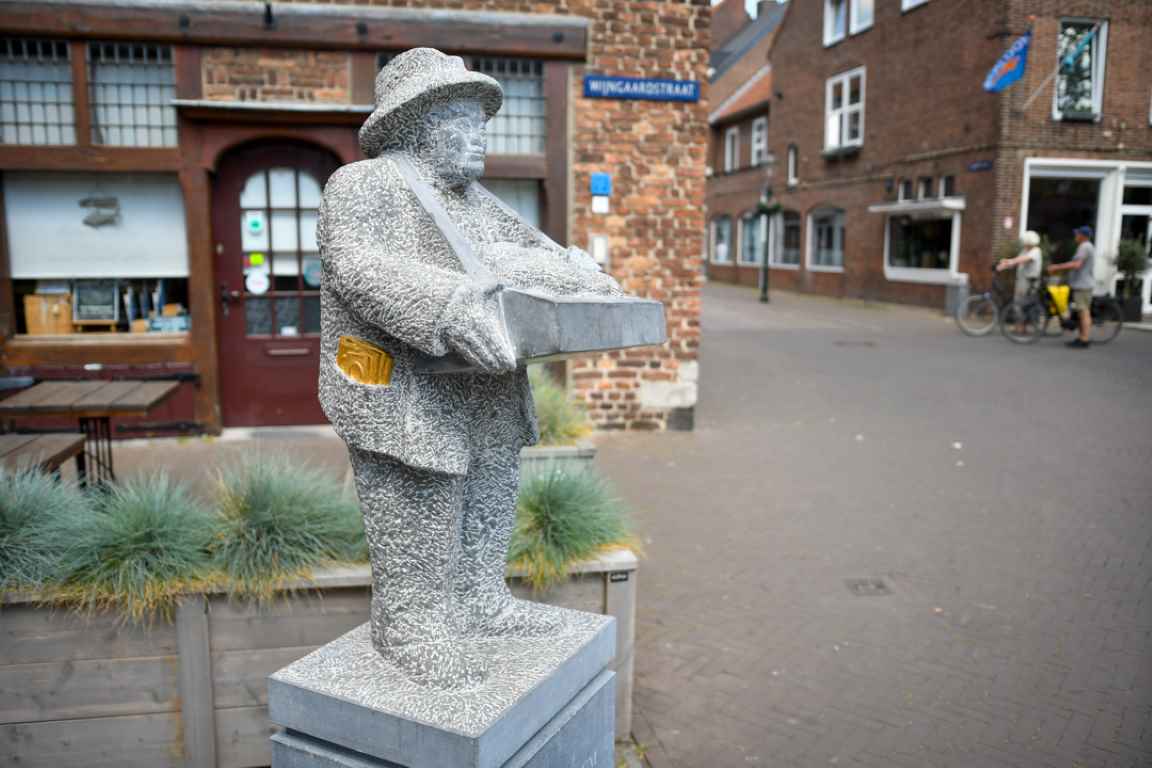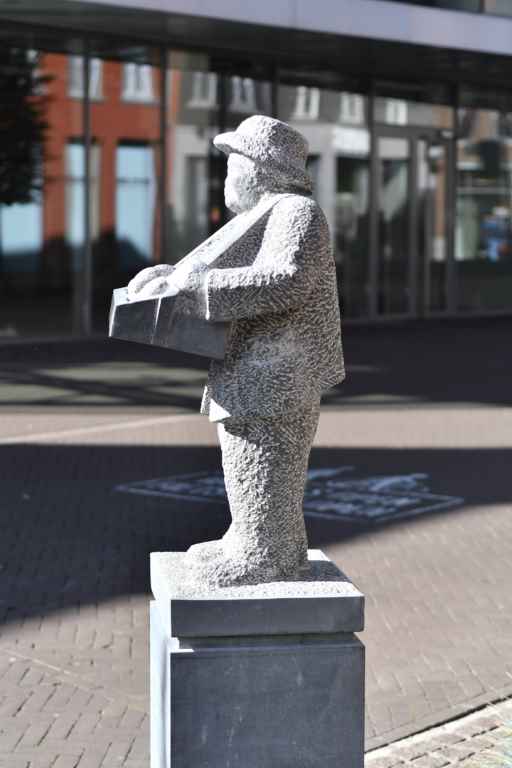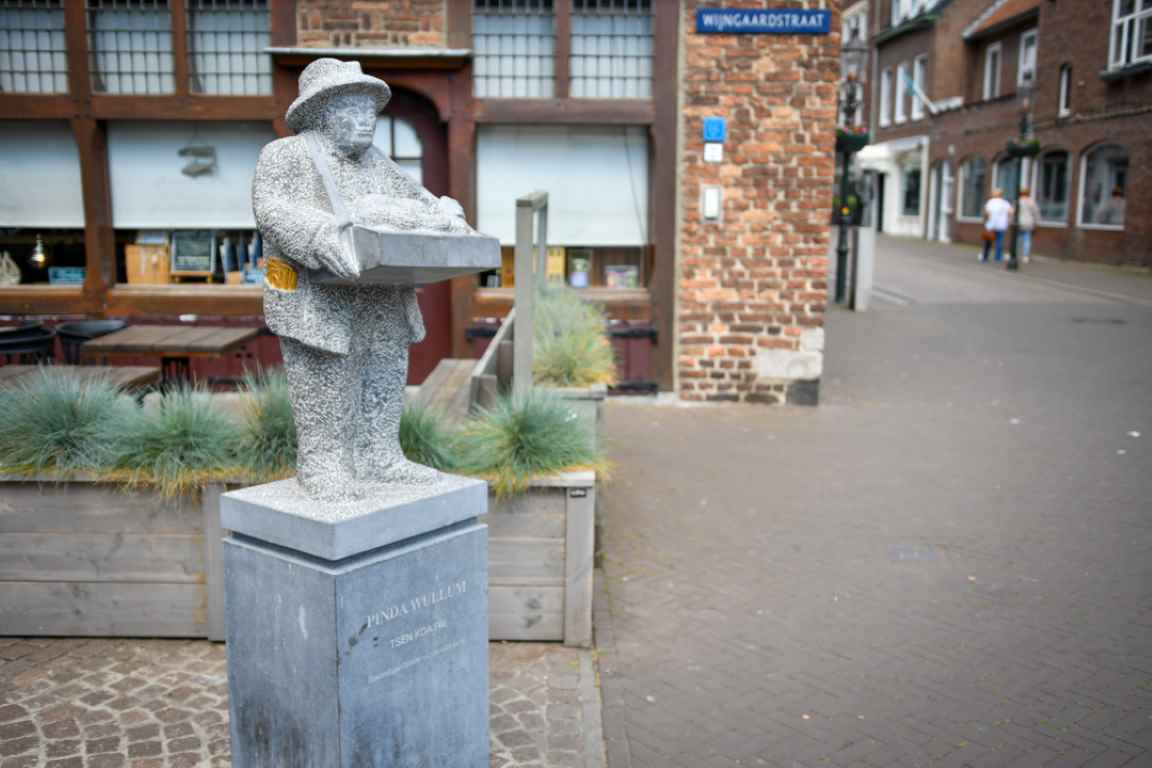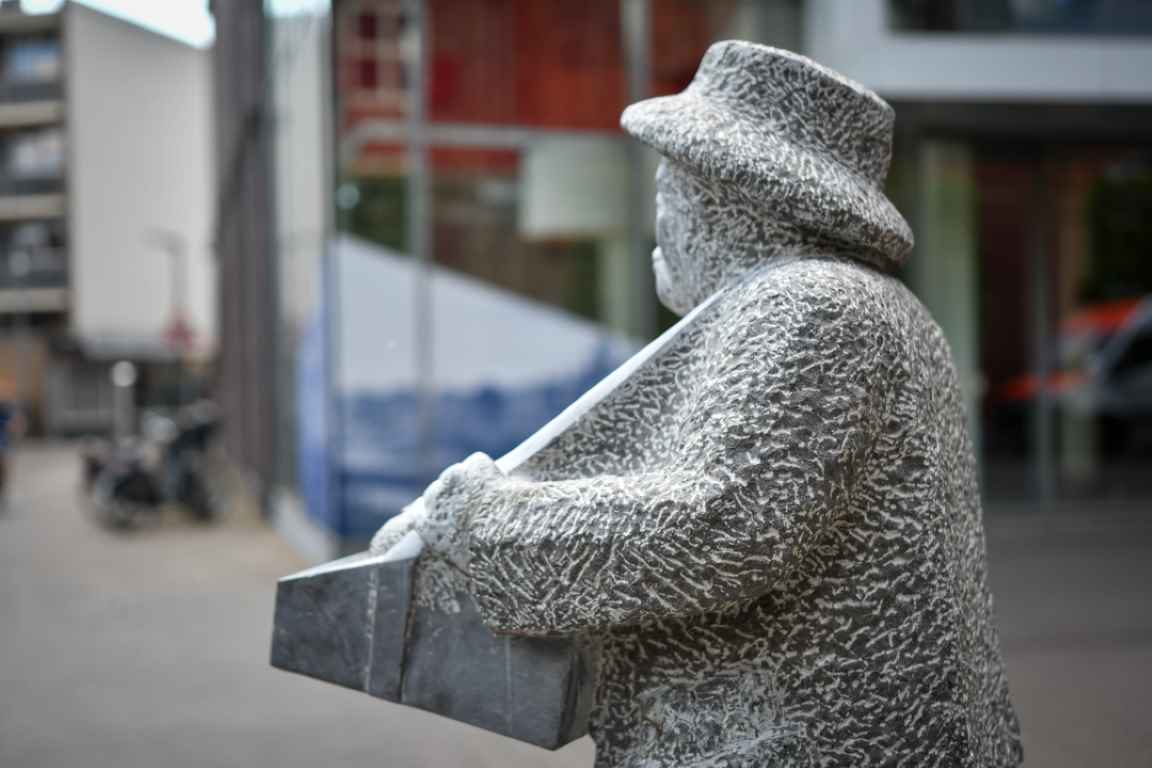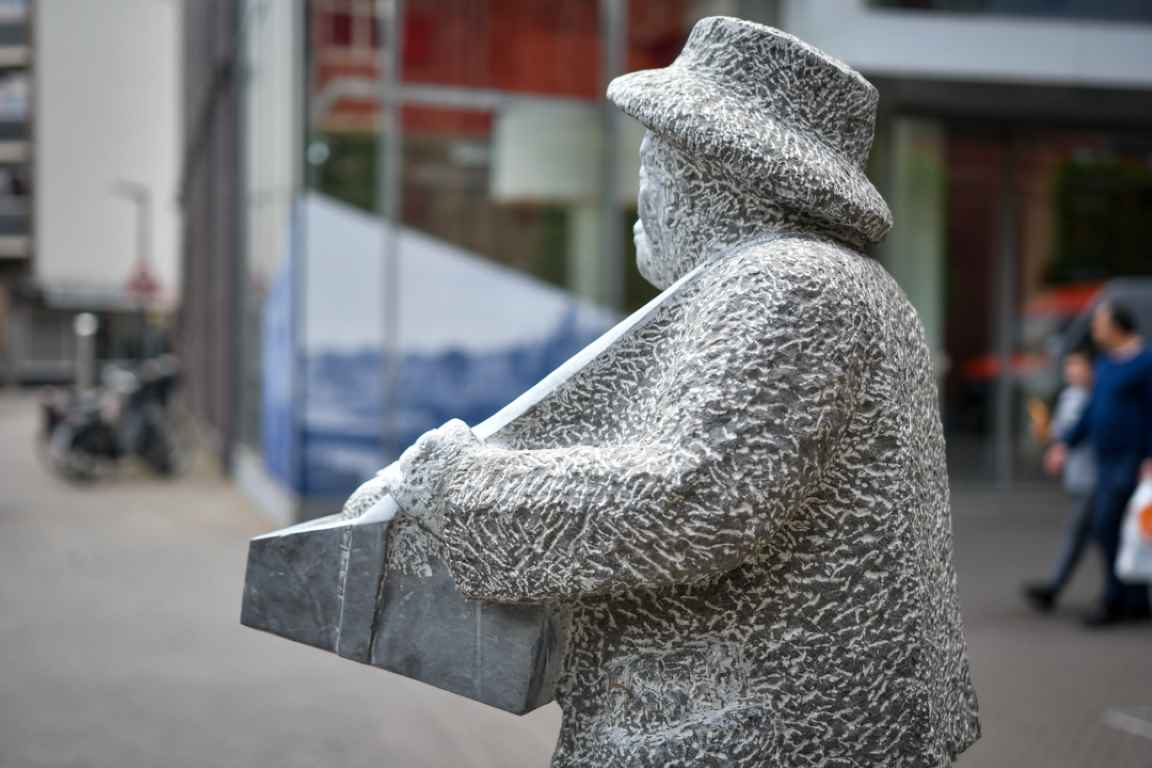Pinda Wullem
Statue street Jodenstraat
Pinda Wullem (Tsen Koa Pai) – Hans Reijnders
Tsen Koa Pai (1892-1965), who originally came from Peking, settled in Venlo in 1937. It was the first time that a Chinese person lived in the city and he received a lot of attention. Initially, he was a trader of Chinese pottery and oriental wall hangings. After the war, he decided to switch to selling roasted peanuts and sweets. That’s how he got his nickname ‘Pinda (Peanut) Wullem’. In order to promote his merchandise, Tsen regularly shouted ‘Pienda, pienda, lekka, lekka’.
He could often be seen in places where many people gathered, such as dance halls and at the home matches of – then still – football club FC VVV. With his remarkable hat and tight jacket, he stood out in the crowd. It is an open secret that the bag in which he put the peanuts and other foodstuffs had a double bottom under which condoms were hidden.
Peanut Wullem burned the peanuts right under the tiled roof of the guesthouse where he was staying. A life-threatening situation that as far as we know never led to accidents. In the years that he lived in Venlo, Tsen became more and more integrated and even spoke the Venlo dialect in his own way. In 1956 he was baptised, almost 65 years of age. At the end of his life, he lived with his girlfriend in Elberfeld, near Wuppertal, Germany, where he died in 1965.
Originally there was another statue of Peanut Wullem in Jodenstraat, made by the Venlo artist Hay Mansvelders. It was stolen in 2016. Hans Reijnders made a new version in his own way, which was placed near the Romerhuis in 2021.
The artist: Hans Reijnders
Hans Reijnders was born in Amsterdam in 1948 and has lived in Venlo since the early 1980s. Reijnders believes it is important that his work, despite being an autonomous image, should have a relationship or contrast with the surrounding space. He uses different types of (natural) stone such as bianco carrara, French limestone, granite, Namur stone and petit granit, as well as bronze.
The Jodenstraat (the Jews’ street)
The Jodenstraat is located in one of the oldest parts of Venlo’s city centre. Traces from Roman times have been found here, dating back to the first century AD. According to the legend about the origins of Venlo, Valuas or Flujas, chieftain of the Bructeren, founded a castle called the Vrijburg near the Jodenstraat and Oude Markt in or around the year 96. The name of the street refers to the presence of Jews, who had already settled in Venlo in the 14th century.
For centuries, there used to be monastery on the corner of Jodenstraat and Heilige Geeststraat.
Unfortunately, you will not find a lot of the old buildings; the area was almost completely destroyed during the bombing raids at the end of 1944, which were intended to destroy Venlo’s city bridge in order to stop the Germans.
Only the Romer House from 1490 was saved and preserved. It is a patrician house built in the late Gothic style. Behind the Romerhuis and the present Jodenstraat (Jews’ Street) and in southern direction around the harbour area, there was a working-class neighbourhood called ‘t Hetje. Nowadays, this would be called a deprived area, with prostitution and much alcohol abuse. Many inhabitants of ‘t Hetje worked in the harbour. The neighbourhood consisted largely of slum dwellings and was therefore cleaned up just before the Second World War. The air raids at the end of 1944 did the rest.
One of the most famous shops in Venlo, Versierhoes van der Veer, is located in the Jodenstraat.
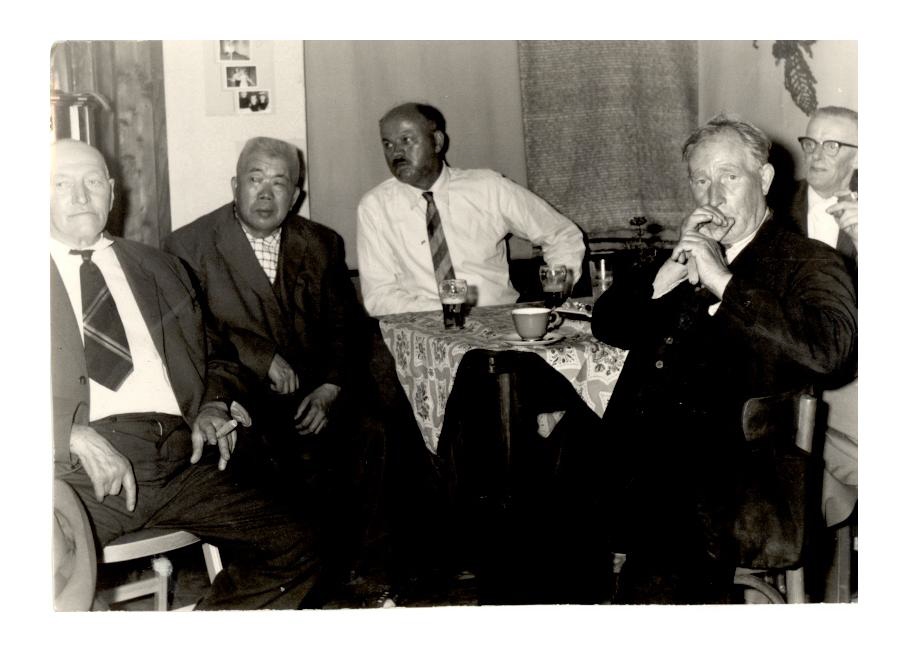
Second from left, Peanut Wullem in the Mariahof community centre on Maaschriksel, erected on 12 September 1949 (Photo: Venlo Municipal Archives)
